Themed collection Chemical Communications HOT Articles

Cucurbiturils in nucleic acids research
The recent progress and future prospects of the application of cucurbiturils in nucleic acids research are highlighted.

Chem. Commun., 2020,56, 15360-15376
https://doi.org/10.1039/D0CC06583H
Cobalt fluorides: preparation, reactivity and applications in catalytic fluorination and C–F functionalization
The preparation, reactivity and catalytic applications of cobalt fluorides in fluorination and C–F functionalization have been highlighted.

Chem. Commun., 2020,56, 8512-8523
https://doi.org/10.1039/D0CC03089A
Hypervalent iodine reagent-mediated reactions involving rearrangement processes
We summarize the developments of hypervalent iodine reagents-mediated reactions involving [1,2]-migration, Hofmann rearrangement, Beckmann rearrangement, ring contraction/expansion, [3,3]-sigmatropic/iodonium-Claisen rearrangement and some miscellaneous rearrangements.
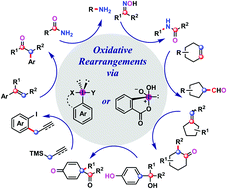
Chem. Commun., 2020,56, 14119-14136
https://doi.org/10.1039/D0CC05354F
Intercalation and flexibility chemistries of soft layered materials
Intercalation and flexibility as two new chemical perspectives are introduced in soft layered materials for designing the structures and dynamic functions.
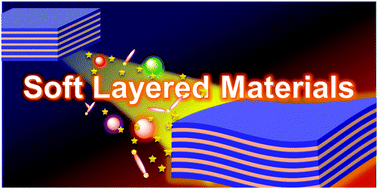
Chem. Commun., 2020,56, 13069-13081
https://doi.org/10.1039/D0CC05931E
Modulation of electronic structures in two-dimensional electrocatalysts for the hydrogen evolution reaction
The electrocatalytic hydrogen evolution reaction (HER) has attracted substantial attention owing to its important role in realizing economic and sustainable hydrogen production via water electrolysis.
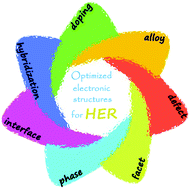
Chem. Commun., 2020,56, 11910-11930
https://doi.org/10.1039/D0CC05272H
Metal–organic framework based nanozymes: promising materials for biochemical analysis
Metal–organic frameworks with enzyme-like catalytic features (MOF nanozymes) exhibit great promise in detecting various analytes with amplified signal outputs.
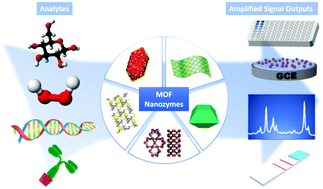
Chem. Commun., 2020,56, 11338-11353
https://doi.org/10.1039/D0CC04890A
Thieno[3,4-c]pyrrole-4,6-dione-based conjugated polymers for organic solar cells
Thieno[3,4-c]pyrrole-4,6-dione (TPD) based conjugated polymers as an electron donor, acceptor and single-component for application in organic solar cells in the past ten years have been intensively reviewed in this Feature Article.
![Graphical abstract: Thieno[3,4-c]pyrrole-4,6-dione-based conjugated polymers for organic solar cells](/en/Image/Get?imageInfo.ImageType=GA&imageInfo.ImageIdentifier.ManuscriptID=D0CC04150E&imageInfo.ImageIdentifier.Year=2020)
Chem. Commun., 2020,56, 10394-10408
https://doi.org/10.1039/D0CC04150E
Perspective on theoretical methods and modeling relating to electro-catalysis processes
Theoretical methods and models for the description of thermodynamics and kinetics in electro-catalysis, including solvent effects, externally applied potentials, and many-body interactions, are discussed.
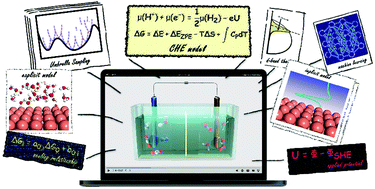
Chem. Commun., 2020,56, 9937-9949
https://doi.org/10.1039/D0CC02998J
Porous materials as carriers of gasotransmitters towards gas biology and therapeutic applications
This review highlights the strategies employed to load and release gasotransmitters such as NO, CO and H2S from different kinds of porous materials, including zeolites, mesoporous silica, metal–organic frameworks and protein assemblies.
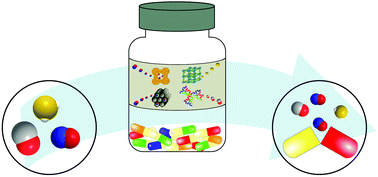
Chem. Commun., 2020,56, 9750-9766
https://doi.org/10.1039/D0CC03740K
Imines as acceptors and donors in N-heterocyclic carbene (NHC) organocatalysis
The application of imines as electrophiles (acceptors) or as a source of nucleophiles (donors) in N-heterocyclic carbene (NHC) catalysis for the synthesis of various nitrogen heterocycles and functionalized amines is presented.
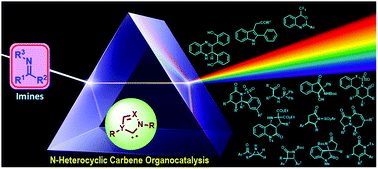
Chem. Commun., 2020,56, 8537-8552
https://doi.org/10.1039/D0CC03290E
Biomimetic self-assembly of subcellular structures
This article summarizes recent progress on biomimetic subcellular structures and discusses integration of these isolated systems.
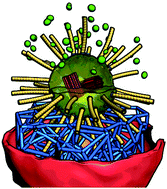
Chem. Commun., 2020,56, 8342-8354
https://doi.org/10.1039/D0CC01395A
Single atomic site catalysts: synthesis, characterization, and applications
This feature article summarizes the recent contributions of the authors in the synthesis, characterization, and applications of SASCs.
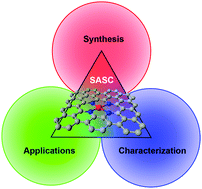
Chem. Commun., 2020,56, 7687-7697
https://doi.org/10.1039/D0CC03221B
Reactivity descriptors in acid catalysis: acid strength, proton affinity and host–guest interactions
Acid strength and proton affinity, the independent properties of catalysts and molecules, are incomplete descriptors of because cations and conjugate anions reorganize their charges as they interact as bound intermediates and transition states.
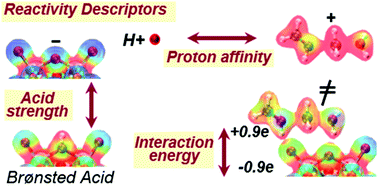
Chem. Commun., 2020,56, 7371-7398
https://doi.org/10.1039/D0CC02593C
Recent advances in metal-catalysed asymmetric sequential double hydrofunctionalization of alkynes
Recent advances in various metal-catalysed asymmetric sequential double hydrofunctionalizations of alkynes have been highlighted in this feature article.
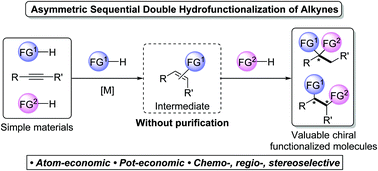
Chem. Commun., 2020,56, 2229-2239
https://doi.org/10.1039/D0CC00068J
Metallation of sensitive fluoroarenes using a potassium TMP-zincate supported by a silyl(bis)amido ligand
Providing unique structural insights, regioselective zincation of a range of fluoroarenes has been accomplished using a novel heterobimetallic K/Zn amide base.
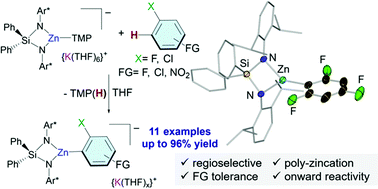
Chem. Commun., 2022,58, 5292-5295
https://doi.org/10.1039/D2CC00979J
C2-Selective silylation of pyridines by a rhodium–aluminum complex
We have developed a C2-selective mono-silylation of a variety of pyridines using a Rh–Al complex.
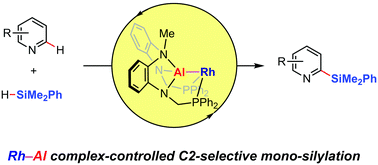
Chem. Commun., 2021,57, 5957-5960
https://doi.org/10.1039/D1CC00278C
Structure–direction towards the new large pore zeolite NUD-3
A subtle structure–direction allows the crystallization of the ordered and fully connected zeolite NUD-3 instead of disordered or interrupted versions.

Chem. Commun., 2021,57, 191-194
https://doi.org/10.1039/D0CC07333D
Self-assembly of alkylated and perfluoroalkylated scissor-shaped azobenzene dyads into distinct structures
Two scissor-shaped azobenzene dyads bearing either linear alkyl or perfluoroalkyl side chains undergo distinct assembly pathways.
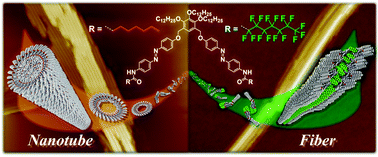
Chem. Commun., 2020,56, 15619-15622
https://doi.org/10.1039/D0CC06907H
Protein-recruiting synthetic molecules targeting the Golgi surface
Synthetic molecules consisting of a small-molecule ligand and a tri-N-methylated myristoyl-Gly-Cys lipopeptide serve as chemical tools to rapidly recruit their target proteins from the cytoplasm to the Golgi surface in living cells.
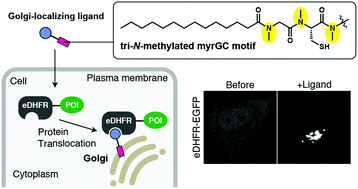
Chem. Commun., 2020,56, 15422-15425
https://doi.org/10.1039/D0CC06908F
Probing self-regeneration of essential protein factors required for in vitro translation activity by serial transfer
Recombinant in vitro translation systems can regenerate essential protein components that maintain protein synthesis during serial dilution.
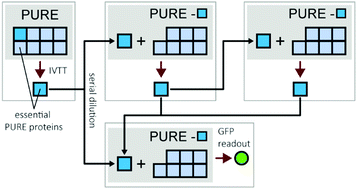
Chem. Commun., 2020,56, 15426-15429
https://doi.org/10.1039/D0CC06515C
Transformation between 2D covalent organic frameworks with distinct pore hierarchy via exchange of building blocks with different symmetries
Direct structural transformation between 2D covalent organic frameworks (COFs) via exchange of molecular building blocks with different symmetries has been realized, which gives rise to the conversion between 2D COFs with distinct pore hierarchy.
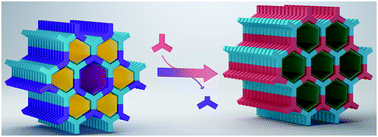
Chem. Commun., 2020,56, 15418-15421
https://doi.org/10.1039/D0CC06536F
On-surface synthesis of doubly-linked one-dimensional pentacene ladder polymers
On-surface investigations of pentacene molecules functionalized with four dibromomethylene groups reveal, after an annealing step, the formation of π-conjugated ladder polymers doubly-linked by ethynylene bridges on a Au(111) surface.
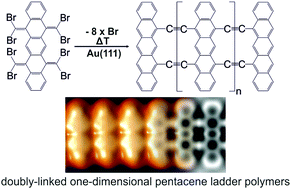
Chem. Commun., 2020,56, 15309-15312
https://doi.org/10.1039/D0CC06865A
Constructing a four-input molecular keypad lock with a multi-stimuli-responsive phthalocyanine
A novel phthalocyanine has been designed and synthesised whose response towards different stimuli can be manipulated to enable it to function as a four-input molecular keypad lock.
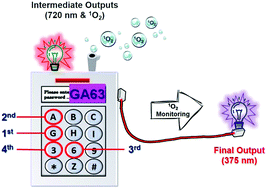
Chem. Commun., 2020,56, 14601-14604
https://doi.org/10.1039/D0CC06251K
Tetrel and pnictogen functionalised propargylidynes
The synthesis of lithium and silver propargylidyne reagents allow the installation of main group elements (Si, Sn, Pb, P, As) as propargylidyne termini.
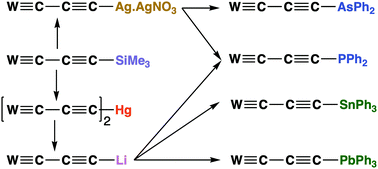
Chem. Commun., 2020,56, 14597-14600
https://doi.org/10.1039/D0CC06196D
Ultrastable radical-doped coordination compounds with antimicrobial activity against antibiotic-resistant bacteria
Radical-doped coordination compounds—generated as a result of lone pair–π interactions and having a long-lived charge-separated state—display photochromism and broad-spectrum antimicrobial activity, even against multi-drug-resistant bacteria.
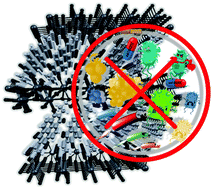
Chem. Commun., 2020,56, 14353-14356
https://doi.org/10.1039/D0CC06379G
A simple and sensitive method for exosome detection based on steric hindrance-controlled signal amplification
A simple and sensitive method for exosome detection based on steric hindrance-controlled signal amplification.
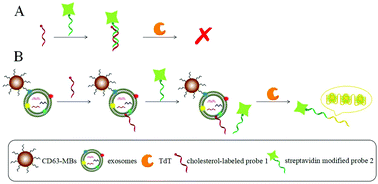
Chem. Commun., 2020,56, 13768-13771
https://doi.org/10.1039/D0CC06113A
A one-dimensional switchable dielectric material with Pd uptake function: [(CH2)3NH2S]2BiCl5
[(CH2)3NH2S]2BiCl5 has dielectric switching and Pd uptake functions, and its adsorption can be monitored by changes in dielectric properties.
![Graphical abstract: A one-dimensional switchable dielectric material with Pd uptake function: [(CH2)3NH2S]2BiCl5](/en/Image/Get?imageInfo.ImageType=GA&imageInfo.ImageIdentifier.ManuscriptID=D0CC05648K&imageInfo.ImageIdentifier.Year=2020)
Chem. Commun., 2020,56, 13764-13767
https://doi.org/10.1039/D0CC05648K
Planar pentacoordinate silicon and germanium atoms
The global minimum of XMg4Y− (X = Si, Ge; Y = In, Tl) and SiMg3In2 contains a planar pentacoordinate atom of group 14 other than carbon.
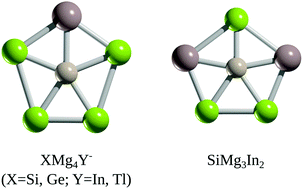
Chem. Commun., 2020,56, 13772-13775
https://doi.org/10.1039/D0CC06107G
A phosphine-free iron complex-catalyzed synthesis of cycloalkanes via the borrowing hydrogen strategy
Herein we report a diaminocyclopentadienone iron tricarbonyl complex catalyzed synthesis of substituted cyclopentane, cyclohexane and cycloheptane compounds using the borrowing hydrogen strategy in the presence of various substituted primary and secondary 1,n diols as alkylating reagents.

Chem. Commun., 2020,56, 12909-12912
https://doi.org/10.1039/D0CC05840H
Hydrophobicity-driven folding and seeded polymerization of cystine-based dimeric diamides in aqueous media
Hydrophobicity-driven folding of cystine-based dimeric diamides with aromatic substituents at the C- and N-termini slows their spontaneous assembly and thus seeded supramolecular polymerization was achieved in aqueous media.

Chem. Commun., 2020,56, 12901-12904
https://doi.org/10.1039/D0CC05255H
Three-component ruthenium-catalyzed remote C–H functionalization of 8-aminoquinoline amides
Multicomponent reactions can efficiently construct complex molecular structures from simple precursors.
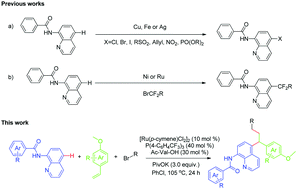
Chem. Commun., 2020,56, 12729-12732
https://doi.org/10.1039/D0CC05491G
K4Cu3(C3N3O3)2X (X = Cl, Br): strong anisotropic layered semiconductors containing mixed p–p and d–p conjugated π-bonds
Metal cyanurates K4Cu3(C3N3O3)2X (X = Cl, Br) containing π-conjugated anions are synthesized in flame-sealed silica tubes and they exhibit 2D graphene-like layered structures and intriguing semiconductor behaviors.
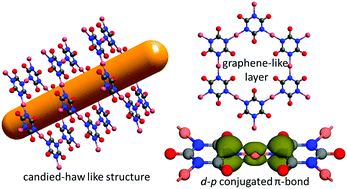
Chem. Commun., 2020,56, 12534-12537
https://doi.org/10.1039/D0CC04547K
All-metal Baird aromaticity
We have proven that Baird's rule can also be applied to a series of all-metal species with both σ- and π-aromaticity.
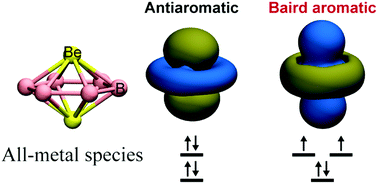
Chem. Commun., 2020,56, 12522-12525
https://doi.org/10.1039/D0CC05586G
Multibranched aliphatic side chains for π-conjugated polymers with a high density of ‘unshielded’ aromatics
Strongly solubilising multibranched aliphatic side chains for π-conjugated polymers are reported, enabling soluble polymers with a high density of unsubstituted, ‘unshielded’ aromatics.
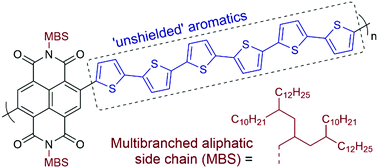
Chem. Commun., 2020,56, 12138-12141
https://doi.org/10.1039/D0CC04967K
Facile one-pot synthesis of cyclic peptide-conjugated photosensitisers for targeted photodynamic therapy
A facile synthetic strategy for in situ cyclisation of peptides and conjugation with functional boron dipyrromethenes (BODIPYs) using a bifunctional linker is reported.
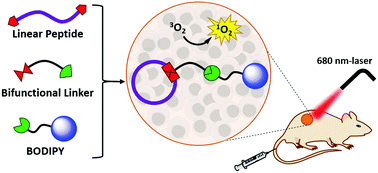
Chem. Commun., 2020,56, 11941-11944
https://doi.org/10.1039/D0CC05264G
Polyoxometalate adsorbed in a metal–organic framework for electrocatalytic dopamine oxidation
A redox-active polyoxometalate, V10O28, was immobilized into a water-stable zirconium-based metal–organic framework, NU-902. The V10O28@NU-902 can show redox hopping-based charge transport and electrocatalytic activity for dopamine sensing.
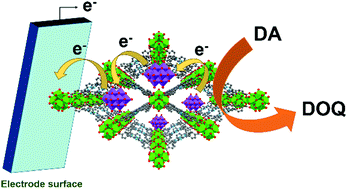
Chem. Commun., 2020,56, 11763-11766
https://doi.org/10.1039/D0CC04904B
Scalable and continuous preparation of nano-stirbars by electrospinning
Continuous and scalable synthesis of nano-stirbars is achieved by combining electrospinning and ultrasonic breaking.
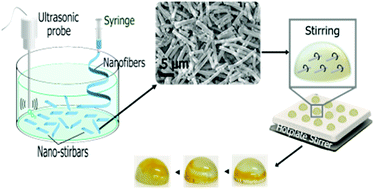
Chem. Commun., 2020,56, 11767-11770
https://doi.org/10.1039/D0CC04408C
Perturbation of liquid droplets of P-granule protein LAF-1 by the antimicrobial peptide LL-III
Protein/RNA droplet formation by liquid–liquid phase separation has emerged as a key mechanism for cellular organization. We show that binding of antimicrobial peptides such as LL-III can lead to loss of droplet function.

Chem. Commun., 2020,56, 11577-11580
https://doi.org/10.1039/D0CC04877A
Autocatalytic DNAzyme assembly for amplified intracellular imaging
An autonomously catalytic assembly of an HCR-DNAzyme circuit was facilely constructed for reliable intracellular miR-21 imaging.
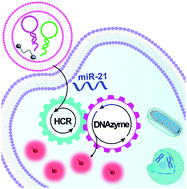
Chem. Commun., 2020,56, 11410-11413
https://doi.org/10.1039/D0CC05257D
Synthesis of polycyclic indoles via organocatalytic bicyclization of α-alkynylnaphthalen-2-ols with nitrones
A new organocatalytic bicyclization of α-alkynylnaphthalen-2-ols with nitrones was first reported, leading to the convergent synthesis of polycyclic indoles with substantial substitution diversity in generally good yields.

Chem. Commun., 2020,56, 11406-11409
https://doi.org/10.1039/D0CC05027J
Mg–Mg bond polarization induced by a superbulky β-diketiminate ligand
Increasing the steric pressure in a low-valent β-diketiminate Mg(I) did not lead to radical formation but gave Mg–N bond cleavage and formation of an asymmetrically substituted Mg–Mg complex.

Chem. Commun., 2020,56, 11402-11405
https://doi.org/10.1039/D0CC05200K
Bimetallic iron–tin catalyst for N2 to NH3 and a silyldiazenido model intermediate
A new tin-supported iron complex catalyzes N2 fixation. The role of this heavy main group element in the catalysis is evaluated.
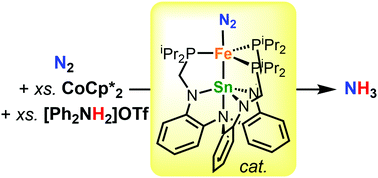
Chem. Commun., 2020,56, 11030-11033
https://doi.org/10.1039/D0CC04563B
Redox-regulated divergence in photocatalytic addition of α-nitro alkyl radicals to styrenes
A divergent photocatalytic system for the reaction of α-bromo nitroalkanes with styrene derivatives is established.
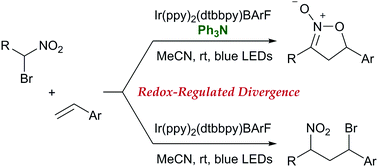
Chem. Commun., 2020,56, 11014-11017
https://doi.org/10.1039/D0CC04821F
[Cp*RuPb11]3− and [Cu@Cp*RuPb11]2−: centered and non-centered transition-metal substituted zintl icosahedra
Cluster anions [Cp*RuPb11]3− (1) and [Cu@Cp*RuPb11]2− (2) represent the first vertex-substituted zintl icosahedra and 1 is the first non-centered zintl icosahedron isolated in the condensed phase.
![Graphical abstract: [Cp*RuPb11]3− and [Cu@Cp*RuPb11]2−: centered and non-centered transition-metal substituted zintl icosahedra](/en/Image/Get?imageInfo.ImageType=GA&imageInfo.ImageIdentifier.ManuscriptID=D0CC03656K&imageInfo.ImageIdentifier.Year=2020)
Chem. Commun., 2020,56, 10859-10862
https://doi.org/10.1039/D0CC03656K
Tumor microenvironment responsive supramolecular glyco-nanovesicles based on diselenium-bridged pillar[5]arene dimer for targeted chemotherapy
Supramolecular glyco-nanovesicles (SeSe-(P5)2⊃Man-NH3+) were successfully constructed via the self-assembly of a diselenium-bridged pillar[5]arene dimer and a mannose derivative, which exhibited tumor microenvironment-responsiveness and targetability.
![Graphical abstract: Tumor microenvironment responsive supramolecular glyco-nanovesicles based on diselenium-bridged pillar[5]arene dimer for targeted chemotherapy](/en/Image/Get?imageInfo.ImageType=GA&imageInfo.ImageIdentifier.ManuscriptID=D0CC04149A&imageInfo.ImageIdentifier.Year=2020)
Chem. Commun., 2020,56, 10642-10645
https://doi.org/10.1039/D0CC04149A
Rational design of a reversible Mg2+/EDTA-controlled molecular switch based on a DNA minidumbbell
The minidumbbell containing an abasic site is used to construct a Mg2+/EDTA-controlled molecular switch for regulating DNA duplex formation and dissociation instantly and reversibly.
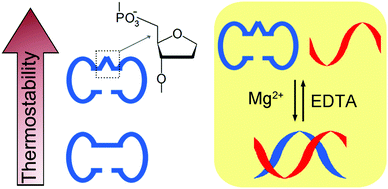
Chem. Commun., 2020,56, 10127-10130
https://doi.org/10.1039/D0CC03774E
A matrix metalloproteinase activation probe for painting human tumours
A new fluorescent peptide provides a quick and simple method of identifying areas of high MMP activity allowing ‘tumour painting’.
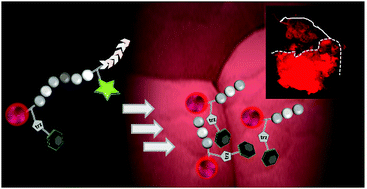
Chem. Commun., 2020,56, 9962-9965
https://doi.org/10.1039/D0CC03886E
Embedding activated carbon nanospheres into polymer-derived porous carbon networks to boost electrocatalytic oxygen reduction
Activated carbon nanospheres were embedded into polymer-derived porous carbon to form heterostructures with improved surface area and ORR performance.
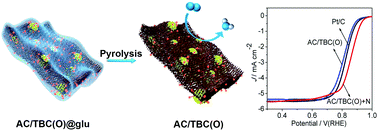
Chem. Commun., 2020,56, 9791-9794
https://doi.org/10.1039/D0CC03253K
Does deamidation affect inhibitory mechanisms towards amyloid protein aggregation?
A diagram to show the differences between wild-type and deamidated hIAPPs interaction with site specific and non-specific inhibitors.
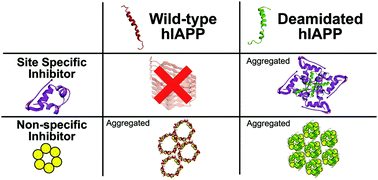
Chem. Commun., 2020,56, 9787-9790
https://doi.org/10.1039/D0CC03548C
Iron Fenton oxidation of 2′-deoxyguanosine in physiological bicarbonate buffer yields products consistent with the reactive oxygen species carbonate radical anion not the hydroxyl radical
Fe(II)-Fenton reaction in bicarbonate buffer yields CO3˙−, not HO˙, oxidizing 2′-deoxyguanosine to yield 8-oxo-7,8-dihydro-2′-deoxyguanosine with no ribose damage.
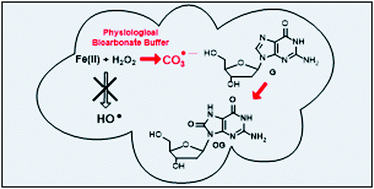
Chem. Commun., 2020,56, 9779-9782
https://doi.org/10.1039/D0CC04138F
Selective catalytic 2e−-oxidation of organic substrates by an FeII complex having an N-heterocyclic carbene ligand in water
An FeII complex, 1, having a pentadentate ligand with an NHC moiety catalyzes substrate oxidation to afford 2e−-oxidized products with high selectivity by suppression of overoxidation in water.
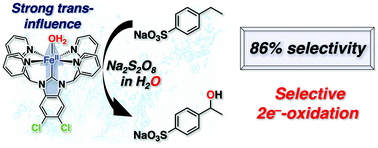
Chem. Commun., 2020,56, 9783-9786
https://doi.org/10.1039/D0CC03289A
Polyoxometalate-functionalized macroporous microspheres for selective separation/enrichment of glycoproteins
Polyoxometalate-functionalized macroporous polymer microspheres were synthesized and applied for highly selective separation/enrichment of glycoproteins from a complex matrix.
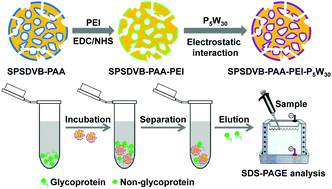
Chem. Commun., 2020,56, 9870-9873
https://doi.org/10.1039/D0CC04244G
An oxygen-reducing biocathode with “oxygen tanks”
Polytetrafluoroethylene submicro-rod, serving as “oxygen tanks” and binders, have been mixed into Os redox polymer-based bilirubin oxidase cathodes, leading to enhanced performance.
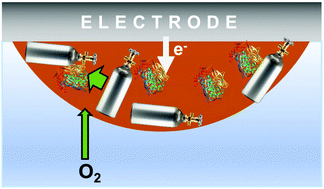
Chem. Commun., 2020,56, 9767-9770
https://doi.org/10.1039/D0CC04031B
A recyclable metal–organic framework for ammonia vapour adsorption
The incorporation of sterically hindered boron centers into MOFs allows the recyclable adsorption of NH3 vapour from aqueous solution.
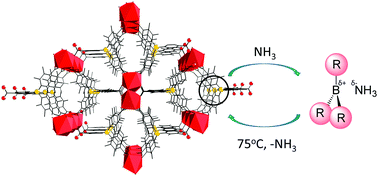
Chem. Commun., 2020,56, 9600-9603
https://doi.org/10.1039/D0CC00741B
Topology versus porosity: what can reticular chemistry tell us about free space in metal–organic frameworks?
We analyse 3D coordination networks in 33 790 coordination polymers and discuss relations between their topological and porosity properties.
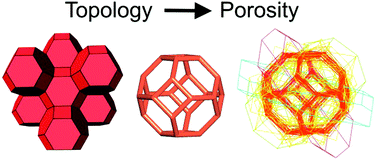
Chem. Commun., 2020,56, 9616-9619
https://doi.org/10.1039/D0CC04004E
Nucleophilic reactivity of a mononuclear cobalt(III)–bis(tert-butylperoxo) complex
A mononuclear cobalt(III)–bis(tert-butylperoxo) adduct (CoIII–(OOtBu)2) bearing a tetraazamacrocyclic ligand was synthesized and characterized using various physicochemical methods, such as X-ray, UV-vis, ESI-MS, EPR, and NMR analyses.

Chem. Commun., 2020,56, 9449-9452
https://doi.org/10.1039/D0CC03385E
Quinoxaline radical-bridged transition metal complexes with very strong antiferromagnetic coupling
Synthesis, magnetic studies and, theoretical calculations of a new family of transition metal complexes bridged by a quinoxaline-based radical.
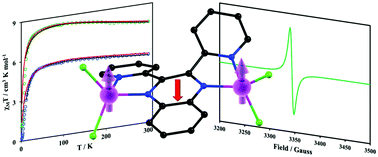
Chem. Commun., 2020,56, 9122-9125
https://doi.org/10.1039/D0CC03713C
Dopamine polymer derived isolated single-atom site metals/N-doped porous carbon for benzene oxidation
Isolated single-atom sites metals/nitrogen-doped porous carbon (ISAS M/NPC, M = Fe, Co, Ni) are prepared by a polymerization-pyrolysis-etching-activation strategy, which can be used as high efficiency and selectivity benzene oxidation catalysts.
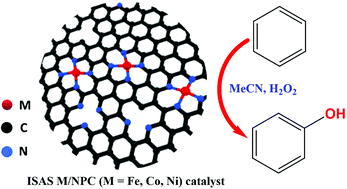
Chem. Commun., 2020,56, 8916-8919
https://doi.org/10.1039/D0CC03620J
Mechanistic insights into polyoxometalate self-assembly in organic solvent: conversion of a cyclic polyoxovanadate-ethoxide to its Lindqvist congener
We report the synthesis of a cyclic hexavanadate polyoxovanadate-alkoxide cluster, [VO(OC2H5)2]6, and its conversion, under solvothermal conditions, to an oxygen-deficient Lindqvist assembly, [V6O6(OC2H5)12]n (n = 1−, 0).

Chem. Commun., 2020,56, 8607-8610
https://doi.org/10.1039/D0CC03464A
Trichromatic-emission and dual-ratio semiconducting polymer dots as fluorescent probe for simultaneous quantification of Cu2+ and pH in vitro and in vivo
Polymer dots emitting in the red, green and blue color regions, have been successfully applied as lysosome-targeting nanoprobes for the simultaneous detection and multicolor imaging of pH and Cu2+ in HeLa cells and zebrafish.
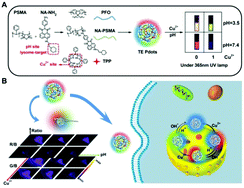
Chem. Commun., 2020,56, 8647-8650
https://doi.org/10.1039/D0CC01811B
New layered perovskite family built from [CeTa2O7]− layers: coloring mechanism from unique multi-transitions
A Ce3+-based layered perovskite compound, Dion–Jacobson type RbCeTa2O7, has been discovered for the first time by introducing only a trivalent cerium ion to form [CeTa2O7]− layers.
![Graphical abstract: New layered perovskite family built from [CeTa2O7]− layers: coloring mechanism from unique multi-transitions](/en/Image/Get?imageInfo.ImageType=GA&imageInfo.ImageIdentifier.ManuscriptID=D0CC03466E&imageInfo.ImageIdentifier.Year=2020)
Chem. Commun., 2020,56, 8591-8594
https://doi.org/10.1039/D0CC03466E
Measuring and modelling mechanochemical reaction kinetics
Quasi-static quantum calculations of the mechanochemical decomposition rate of methyl thiolate species on Cu(100) accurately reproduce the experimental kinetics measured in ultrahigh vacuum by an atomic force microscopy tip.
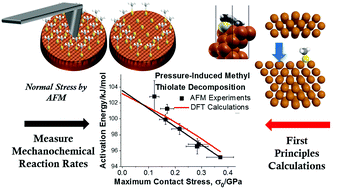
Chem. Commun., 2020,56, 7730-7733
https://doi.org/10.1039/D0CC02992K
Site-selective synthesis of 1,3-dioxin-3-ones via a gold(I) catalyzed cascade reaction
A novel gold(I)-catalyzed protocol for the synthesis of 4H-1,3-dioxin-3-ones is presented.

Chem. Commun., 2020,56, 7734-7737
https://doi.org/10.1039/D0CC02703K
Tunable room temperature phosphorescence and energy transfer in ratiometric co-crystals
Color-tunable green and yellow room temperature phosphorescence is realized through a ratiometric co-crystal strategy.
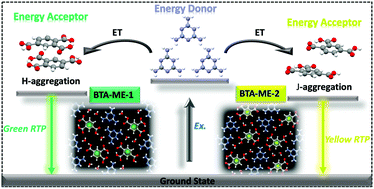
Chem. Commun., 2020,56, 7698-7701
https://doi.org/10.1039/D0CC02730H
Asymmetric catalysis with a chiral-at-osmium complex
Stereogenic osmium center mediates enantioselective ring-closing C(sp3)–H aminations of sulfonylazides and azidoformates.
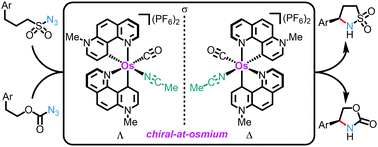
Chem. Commun., 2020,56, 7714-7717
https://doi.org/10.1039/D0CC03280H
Mechano-assisted synthesis of an ultramicroporous metal–organic framework for trace CO2 capture
Hybrid ultramicroporous ZU-36-Ni (GeFSIX-3-Ni) synthesized by a mechano-assisted thermal transformation method exhibits excellent trace CO2 capture performance through strong host–guest interactions.
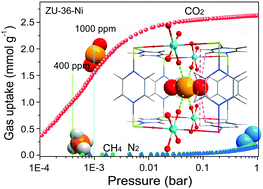
Chem. Commun., 2020,56, 7726-7729
https://doi.org/10.1039/D0CC03196H
Structural evolution from a fence-like to pillared-layer metal–organic framework for the stable oxygen evolution reaction
A porous fence-like MOF transforms into a dense pillared-layer coordination polymer, improving its chemical stability and exhibiting an excellent electrolytic OER performance.
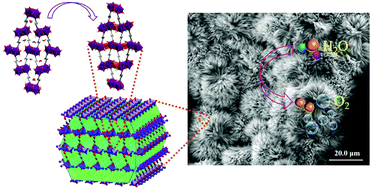
Chem. Commun., 2020,56, 7722-7725
https://doi.org/10.1039/D0CC02772C
Fluorescence imaging of hypochlorous acid and peroxynitrite in vitro and in vivo with emission wavelength beyond 750 nm
Hydro-Si-oxazines were exploited as NIR fluorescent probes to monitor HClO/ONOO− produced by phagocytes in inflammation-related diseases.
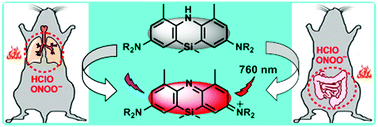
Chem. Commun., 2020,56, 7718-7721
https://doi.org/10.1039/D0CC02322A
A three-channel fluorescent probe to image mitochondrial stress
A two-photon fluorescent probe NPClA was developed for imaging mitochondrial stress.
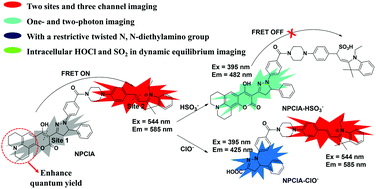
Chem. Commun., 2020,56, 7710-7713
https://doi.org/10.1039/D0CC02668A
Enzymatic modular synthesis and microarray assay of poly-N-acetyllactosamine derivatives
An efficient enzymatic modular assembly strategy was developed for the preparative-scale synthesis of poly-LacNAc glycans with defined fucosylation and sialylation patterns.
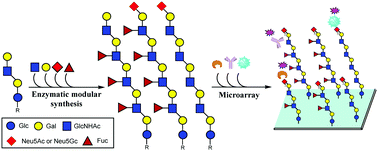
Chem. Commun., 2020,56, 7549-7552
https://doi.org/10.1039/D0CC03268A
About this collection
This ongoing web-collection features the latest articles published in ChemComm that have been marked as HOT by our Editors and trusted Reviewers. Congratulations to all those featured!